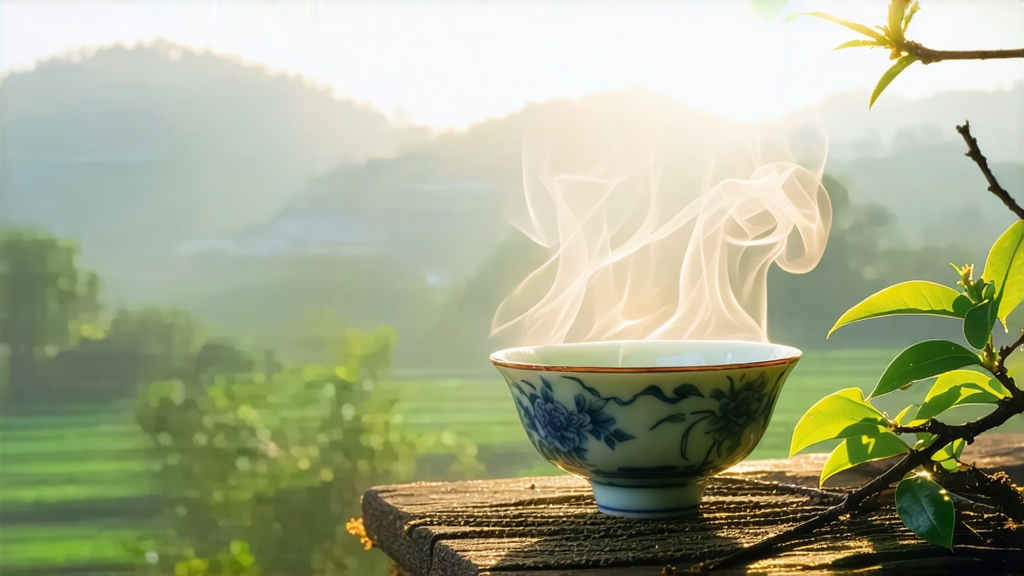
Alishan High-Mountain Oolong, known in Taiwan as “Alishan Qing Xiang Oolong,” is the island’s most celebrated gift to the global tea stage. Grown between 1,000 and 1,400 metres on the forested spine of the Alishan range, this cultivar captures the cool breath of the Taiwan Strait and the warm monsoon rains that roll inland each afternoon. The result is a liquor that glows like pale amber, smells of mountain orchids and fresh cream, and finishes with a lingering sweetness that Chinese poets liken to “returning spring to the tongue.”
History and Terroir
Tea bushes first climbed Alishan in the late nineteenth century when the Qing government encouraged Han settlers to open the highlands. The original seed stock came from Fujian’s Wuyi Mountains, carried across the channel by migrants who believed that the island’s misty peaks could tame the rock-ribbed character of their hometown bushes. For decades the leaf was rolled and roasted in the Min-Nan style, but after 1980 Taiwanese agronomists selected the Jin Xuan (TTES #12) and Qing Xin (TTES #13) cultivars for elevation, reducing roast levels to showcase the pristine alpine air. Today Alishan Oolong is protected by a geographical indication; only leaves picked within the townships of Meishan, Zhuqi, Fanlu, and Alishan proper may bear the name.
Elevation shapes every molecule of flavour. At 1,200 m the average temperature is 6 °C lower than the lowland plains, slowing photosynthesis and concentrating amino acids. Morning clouds filter ultraviolet light, prompting the plant to produce more fragrant terpenes, while sharp diurnal swings convert starches into soluble sugars. The soil is a young lateritic loam rich in iron and magnesium, flushed daily by mineral springs that descend through cypress and camphor forest. Locals say the mountain “breathes” twice a day: once when the Pacific fog climbs the western slope at dawn, and again when the continental air slips seaward after dusk. Between these breaths the tea bush rests, storing alpine silence in its veins.
Plucking and Craft
The harvest window opens in late March and continues through early May, resuming for a lighter autumn flush in October. Only the apical two or three leaves are taken, when the bud has just unfolded into a fish-tail shape and the serrations on the second leaf still feel velvety to the touch. Experienced pluckers work from 9 a.m. to 3 p.m., timing their baskets so that the leaf reaches the factory before the evening chill stiffens the cells.
Withering begins outdoors on bamboo trays set in dappled shade. The leaf is tossed every fifteen minutes to bruise the edges gently, initiating oxidation while the centre remains green. After ninety minutes the trays are moved indoors where dehumidifiers maintain 65 % relative humidity. Here the tea “sleeps” for another six hours, releasing grassy aldehydes and drawing mountain oxygen into its wounded margins.
Oxidation is arrested at 18–25 %, lower than Dong Ding but higher than modern green oolongs. A rotating drum heated to 180 °C passes the leaf for exactly 45 seconds, locking in the jade colour and arresting enzyme activity. While still warm the leaf is wrapped in a square of cotton cloth and loaded into the roller: a vertical press that twists the bundle into a tight nugget. The pressure is applied in sixty short bursts, each followed by a manual loosening of the cloth so that moisture can escape. This “cloth-ball rolling,” invented in Taiwan in 1936, gives Alishan its signature hemispherical shape and forces aromatic oils to the surface.
The final bake is a careful coaxing rather than a roast. For eight hours the leaf rests on sieves suspended over charcoal embers made from longan fruit wood. The temperature never exceeds 80 °C, preserving the milky lactone notes that cuppers describe as “condensed orchid.” When finished the leaf loses 94 % of its moisture and shrinks into glossy jade pearls that rattle like marbles in the palm.
Grades and Styles
Alishan Oolong is marketed under three unofficial grades. “Dayuling” refers to gardens above 2,000 m, a rarity that fetches auction prices; the leaf is so tender it can be infused ten times without losing structure. “Shanlinxi” occupies the 1,400–1,800 m